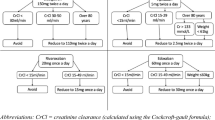Abstract
Introduction:
In an aging population, anticoagulation in patients with musculoskeletal injuries is increasingly prevalent. The North American literature indicates an absence of consensus concerning the most appropriate management for this group. We aim to test the hypothesis that there is a lack of consensus in the UK regarding the perioperative management of patients with hip fractures on long-term warfarin therapy.
Materials and Methods:
A representative group of 400 consultant orthopedic surgeons was surveyed by postal questionnaire regarding their policy on the reversal of anticoagulation in warfarinized patients with hip fractures. The consultants contacted were selected to represent a geographical spread throughout the UK.
Results:
There were 159 respondents (40% response rate), of which 79% (126) had a trauma commitment. 95 (75%) of these had a protocol for the reversal of anticoagulation prior to surgery. The commonest method used was to simply withhold warfarin and wait (70%). Other methods included FFP (16%), and low-dose (23%) and high-dose (14%) vitamin K. Some respondents used more than onemethod. Although nearly all respondents preferred an INR < 2.0 prior to surgery, 55% preferred an INR < 1.5.
Discussion:
Hip fracture in the presence of long-term warfarin use is associated with significantly increased morbidity. This problem is likely to increase. Our results demonstrate variation in approach throughout the UK with regard to warfarin reversal and the acceptable INR at which to operate in this group of patients. We propose that low-dose vitamin K is considered more widely as a safe and effective method of warfarin reversal in this group.
Similar content being viewed by others
References
Gullberg B, Johnell O, Kanis JA. World-wide projections for hip fracture. Osteoporos Int 1997;7:407–13.
Lyons AR. Clinical outcomes and treatment of hip fractures. Am J Med 1997;103:51S–64S.
Baglin TP, Keeling DM, Watson HG. Guidelines on oral anticoagulation (warfarin): third edition — 2005 update. Br J Haematol 2005;132:277–85.
Hirsh J, Dalen JE, Anderson DR, Poller L, Bussey H, Ansell J, Deykin D, Brandt JT. Oral anticoagulants: mechanism of action, clinical effectiveness, and therapeutic range. Chest 1998;114:445–69.
Coimbra R, Hoyt DB, Anjaria DJ, Potenza BM, Fortlage D, Hollingsworth-Fridlund P. Reversal of anticoagulation in trauma: a North-American survey on clinical practices among trauma surgeons. J Trauma 2005;59:375–82.
Al-Rashid M, Parker MJ. Anticoagulation management in hip fracture patients on warfarin. Injury 2005;36:1311–5.
Hanley JP. Warfarin reversal. J Clin Pathol 2004;57:1132–9.
Kirsch MJ, Vrabec GA, Marley RA, Salvator AE, Muakkassa FF. Preinjury warfarin and geriatric orthopaedic trauma patients: a case-matched study. J Trauma 2004;57:1230–3.
Bansal R, Watson DK. Surgical delay in acute admissions on warfarin: are we doing enough?. Int J Clin Pract 2005;59:1283–8.
Rajaganeshan R, Dussa CU, Sahni V. National survey in the United Kingdom of prophylaxis of deep vein thrombosis for patients with fracture of the neck of femur. Injury 2006;37:721–6.
Zucherman JD. Hip fracture. N Engl J Med 1996;334:1519–25.
Bottle A, Aylin P. Mortality associated with delay in operation after hip fracture: observational study. BMJ 2006;332:947–50.
Hylek EM, Regan S, Go AS, Hughes RA, Singer DE, Skates SJ. Clinical predictors of prolonged delay in return of the international normalisation ratio to within therapeutic range after excessive anticoagulation with warfarin. Ann Intern Med 2001;135:393–400.
White RH, McKittrick T, Hutchinson R, Twitchell J. Temporary discontinuation of warfarin therapy: changes in the international normalisation ratio. Ann Intern Med 1995;122:40–2.
British Committee for Standards in Haematology, Blood Transfusion Task Force Guidelines for the use of fresh-frozen plasma, cryoprecipitate and cryosupernatant. Br J Haematol 2004;126:11–28.
Chng WJ, Tan MK, Kuperan K. An audit of fresh frozen plasma usage in an acute general hospital in Singapore. Singapore Med J 2003;44:574–8.
Lubetsky A, Yonath H, Olchovsky D, Loebstein R, Halkin H, Ezra D. Comparison of oral vs. intravenous phytonadione (vitamin K1) in patients with excessive anticoagulation. Arch Intern Med 2003;163:2469–73.
Crowther MA, Julian J, Douketis J, Kovacs M, Biagoni L, Schnurr T, McGinnis J, Gent M, Hirsh J, Ginsberg J. Treatment of warfarin-associated coagulopathy with oral vitamin K: a randomised controlled trial. Lancet 2000;356:1551–3.
Gunther KE, Conway G, Leibach L, Crowther MA. Low-dose oral vitamin K is safe and effective for outpatient management of patients with INR > 10. Thromb Res 2004;113:205–9.
Tharmarajah P, Pusey J, Keeling D, Willett K. Efficacy of warfarin reversal in orthopaedic trauma surgery patients. J Orthop Trauma 2007;21:26–30.
British Medical Association, Royal Pharmaceutical Society of Great Britain. British National Formulary. 2002;44:477.
Evans IL, Sayers MS, Gibbons AJ, Price G, Snooks H, Sugar AW. Can warfarin be continued during dental extraction? Results of a randomised controlled trial. Br J OralMaxillofac Surg 2002;40:248–52.
Dunn AS, Turpie AGG. Perioperative management of patients receiving oral anticoagulants. A systematic review. Arch Intern Med 2003;163:901–8.
Kearon C, Hirsh J. Management of anticoagulation before and after elective surgery. N Engl J Med 1997;336:1506–11.
Smit A, Hooper G. Elective hand surgery in patients taking warfarin. J Hand Surg 2004;29B:204–5.
Wallace DL, Latimer MD, Belcher HJCR. Stopping warfarin therapy is unnecessary for hand surgery. J Hand Surg 2004;29B:201–3.
Author information
Authors and Affiliations
Corresponding author
Rights and permissions
About this article
Cite this article
Starks, I., Cooke, S., Docker, C. et al. Warfarinized Patients with Proximal Femoral Fractures: Survey of UK Clinical Practice. Eur J Trauma Emerg Surg 35, 287–290 (2009). https://doi.org/10.1007/s00068-008-8070-4
Received:
Accepted:
Published:
Issue Date:
DOI: https://doi.org/10.1007/s00068-008-8070-4




